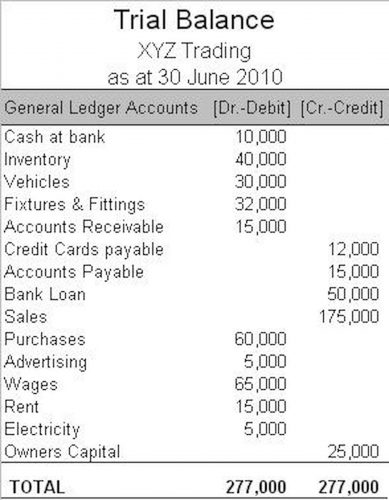
One of the benefits of using the net present value for deciding on a project is that it uses an alternative rate of return that could be earned if the project had never been done. In other words, https://www.bookstime.com/ the project needs to earn at least more than the rate of return that could be earned elsewhere or the discount rate. The second step of a cost-benefit analysis is to determine the project costs.

When a budget constraint exists, CBA chooses the one with the higher benefit-cost ratio. Without a budget constraint, CBA chooses any alternative with positive net-benefits, as this indicates that this intervention is socially worthwhile. In the absence of a pre-specified budget constraint, the main role of CEA as an intervention evaluation method is to indicate which dementia interventions can be eliminated from consideration and therefore not to be financed. However, CBA places a monetary value on health outcomes so that both costs and benefits are in monetary units (such as dollars). Cost-benefit analysis is a way to compare the costs and benefits of an intervention, where both are expressed in monetary units. This analysis can be expanded by considering the total benefits and total costs (direct, indirect, intangible and opportunity).
How Accurate Is Cost-Benefit Analysis?
When tallying costs, you’ll likely begin with direct costs, which include expenses directly related to the production or development of a product or service (or the implementation of a project or business decision). Labor costs, manufacturing costs, materials costs, and inventory costs are all examples of direct costs. There are enormous economic benefits to running these kinds of analyses before making significant organizational decisions. By doing analyses, you can parse out critical information, such as your organization’s value chain or a project’s ROI. Some complex problems require deeper analysis, and a company can use cost-benefit analysis when it isn’t abundantly clear whether or not to pursue an undertaking. By determining the expenses and identifying what will be favorable, a company can simplify the decision-making process by synthesizing a cost-benefit analysis.
Health Sector Cost-Benefit Analysis Guidance – Millennium Challenge Corporation
Health Sector Cost-Benefit Analysis Guidance.
Posted: Thu, 28 Sep 2023 16:27:01 GMT [source]
Simply put, a cost-benefit analysis helps a business owner decide whether the dollar value of gain from a business decision is worth the dollar value of costs incurred in executing that decision. Such an analysis can help businesses decided whether they want to take on a specific project, choose between multiple mutually exclusive projects or even determine the optimal scale of a specific project. However, large projects that go on for a long time can be problematic in terms of CBA.
What Is the Main Goal of Using a Cost-Benefit Analysis?
“[Cost benefit analysis] assumes that a monetary value can be placed on all the costs and benefits of a program, including tangible and intangible returns. In response, I would say that the aggregate sum of welfare among individuals in what is a cost benefit analysis a society does not translate into the general welfare of citizens. The use of an aggregate sum focuses purely on satisfying the preferences of the majority, allowing the individual welfare of disadvantaged citizens can be overlooked.
- One of the major limitations of cost-benefit analysis is that it is possible to not adequately understand all of the potential benefits and costs.
- FEMA does not see, collect, or store any data you enter into the BCA Toolkit unless the file is submitted as part of a Hazard Mitigation Assistance (HMA) or Public Assistance (PA) project application.
- Benefit-Cost Analysis (BCA) is a method that determines the future risk reduction benefits of a hazard mitigation project and compares those benefits to its costs.
- Factoring in opportunity costs allows project managers to weigh the benefits from alternative courses of action and not merely the current path or choice being considered in the cost-benefit analysis.
- The first weakness, as pointed out by [9], is that it applies a constant price to a QALY.
- Thus, for the GDS, it made sense to use the preferences of dementia patients to help estimate the benefits for these three new interventions.
These tables are then used for comparison with the particular intervention one is evaluating using CUA, which in our case relates to dementia. Table 3 gives an abbreviated league table that appeared in [5] (The interventions in Mason et al.’s (1993) table are valued in 1990 UK pounds. Critics of cost-benefit analysis argue that reducing all benefits to monetary terms is impossible and that a quantitative economic standard is inappropriate to political decision making. Cost-Benefit analysis is an approach to activity appraisal that involves the estimation of the overall cost and benefits in monetary value terms.
CBA under US administrations
This is true for the government as well as for private citizens as Medicare expenses can go down when people’s dementia symptoms are reduced. Whether one selects Donepezil Monotherapy or Memantine Monotherapy from the list of the mutually exclusive rivals in Table 4, its social value does not then need to be compared with any other intervention to be justified. This is the criterion for any dementia intervention using CBA to be determined to be socially worthwhile.

This externality was explicitly priced in the context of the cognitive rehabilitation intervention referred to in Table 5. The value of the caregiver’s time saved by the TAP constituted the net-benefits of the intervention. The pricing method used for the corrective lenses, hearing aids and avoiding nursing homes interventions was based on the Value of a Statistical Life (VSL) literature. Individual preferences are involved in this method because individuals are willing to trade off a specific probability of dying on the job for the extra salaries that are paid per year to compensate for incurring that extra risk. If a person is willing to accept $5000 as compensation for a one-in-thousand chance of dying, then a thousand times $5000, that is $5 million, is what a thousand times greater risk would be worth, statistically speaking.
Identify the goals and objectives you’re trying to address with the proposal. This can help you identify and understand your costs and benefits, and will be critical in interpreting the results of your analysis. A cost-benefit analysis requires substantial research across all types of costs. This means considering unpredictable costs and understanding expense types and characteristics.
- This dual burden of elevated health care expenditures and the gender wage gap may force employed women into difficult choices between necessary care and affordability.
- In other words, the opportunity cost is the forgone or missed opportunity as a result of a choice or decision.
- Your cost-benefit analysis clearly shows the purchase of the stamping machine is justified.
- Since it’s based on adding positive factors and subtracting negative ones to get a net result, it is also known as running the numbers.
- Depending on the timeframe of the project, this may be as simple as subtracting one from another; if the benefits are higher than the cost, the project has a net benefit to the company.
- However, with any type of model used in performing a cost-benefit analysis, there are a significant amount of forecasts built into the models.
The BCA Toolkit uses a Leaflet Application Programming Interface (API) for property address lookup and standardization. The Leaflet API may use your IP address for geolocation purposes but does not collect any personal information. We accept payments via credit card, wire transfer, Western Union, and (when available) bank loan. Some candidates may qualify for scholarships or financial aid, which will be credited against the Program Fee once eligibility is determined. Our easy online application is free, and no special documentation is required. All applicants must be at least 18 years of age, proficient in English, and committed to learning and engaging with fellow participants throughout the program.
As gender-based financial disparities become increasingly evident, it’s important for health insurers and employers to reevaluate and redesign benefit coverage. This proactive approach can not only alleviate the financial strain on women but also foster equity within organizations, ultimately contributing to optimal health and well-being for all genders. Just as the “pink tax” highlights price discrepancies in consumer products, the health care sector and employers should address these inequities to help ensure a fair and accessible health care system for everyone. Deloitte’s health actuarial team has delved into the average benefit design’s consequences on women’s financial outlays when accessing health care services. Our findings suggest that health insurance products may inadvertently create an income gap for working women, compounding the effects of the well-documented gender wage disparity, where women earn approximately $0.82 for every dollar earned by men. For Black and Latinx women, this income gap is even wider at $0.70 and $0.65, respectively, compared to White men.
Applicants should include all costs regardless of who bears the burden of specific cost item (including costs paid for by State, local, and private partners, as well as the Federal government). Some might also say that the use of CBA and VSL at all is problematic because it sometimes requires a price tag to be put on human life, which is highly controversial. Still, others would say that it would be easier to change the structure of CBA itself to include welfare or other non-monetary considerations.